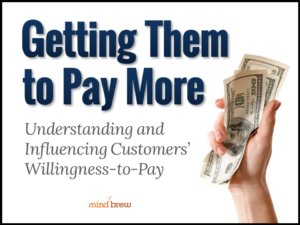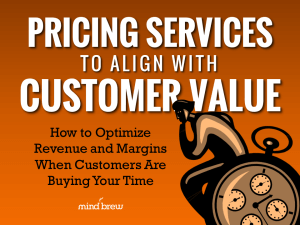Regular readers will know that willingness to pay is a reoccurring motif in the PricingBrew Journal. While we sometimes discuss it in terms of price sensitivity or win-rate elasticity, it all falls under the same overarching theme:
The better your understanding of differences in willingness to pay or price sensitivity across your marketplace, the more effective and profitable your prices will ultimately be.
In conversations with various pricing teams, it’s clear that this message has been getting through. More and more, teams are recognizing that “where to price” is a decision that is best made with an understanding as to “what they’ll pay.” That said, we’ve noticed that are still some misconceptions around willingness to pay that need to be addressed.
From our perspective, one of the most significant misconceptions is the notion that willingness to pay is “fixed” across customers, products, or time.
Under this misconception, practitioners may seek to assign each customer to a particular willingness to pay bucket or price sensitivity strata. Once set, these designations would then drive the relative pricing or discount levels on everything the customer buys moving forward.
While this may seem reasonable on the surface, it ends up leaving a ton of money on the table. Why? Because willingness to pay is not fixed!
In reality, willingness to pay can change when the circumstances change. Here are a few examples to illustrate:
- A customer with a low willingness to pay (WTP) on a common product they buy all the time can have a high WTP on a more specialized product they rarely buy…even when these items are within the same transaction.
- A customer can have a relatively high WTP when trying to avert a line-down situation and a relatively low WTP when simply replenishing inventory…even though they’re purchasing the same product in both circumstances.
- For the same products, a customer can have a relatively high WTP in one period and relatively low WTP in the next period because something has changed within their company or sector.
When you assume a “set” level of WTP or price sensitivity, you simply can’t help but price too high in certain circumstances and too low in other circumstances. But this misconception carries another significant cost as well…
When you think willingness to pay is fixed and you don’t recognize that it can and does change, you can miss the huge opportunity to change it yourself.
Once you understand that WTP is situational…circumstantial…and therefore somewhat malleable…you’ll realize that it’s not entirely out of your hands. You don’t have to just accept that “it is what it is.” You can actually do something about it. You can take proactive and deliberate steps to influence the situation, change the circumstances, and move your customers’ willingness to pay in a positive direction.














